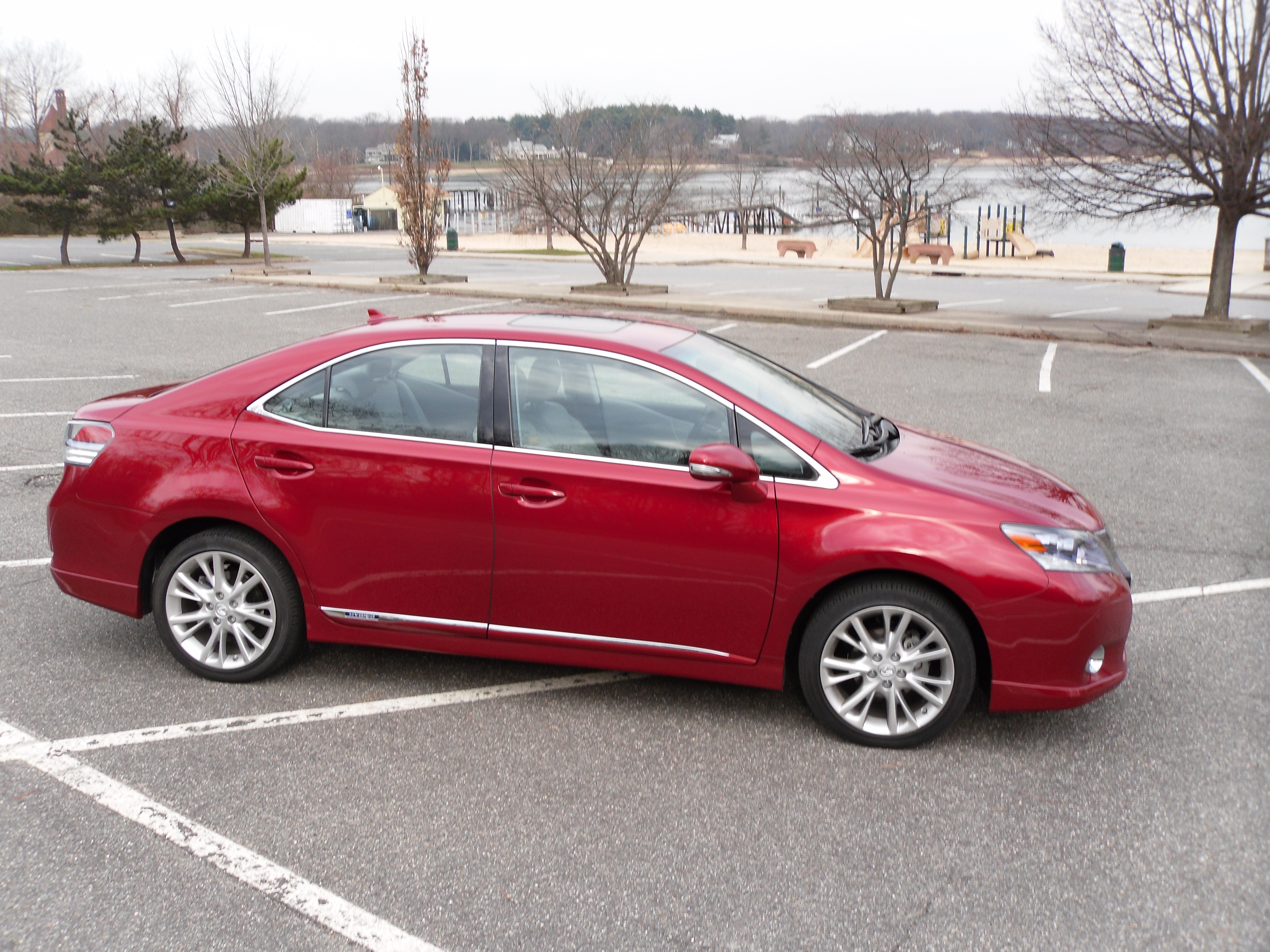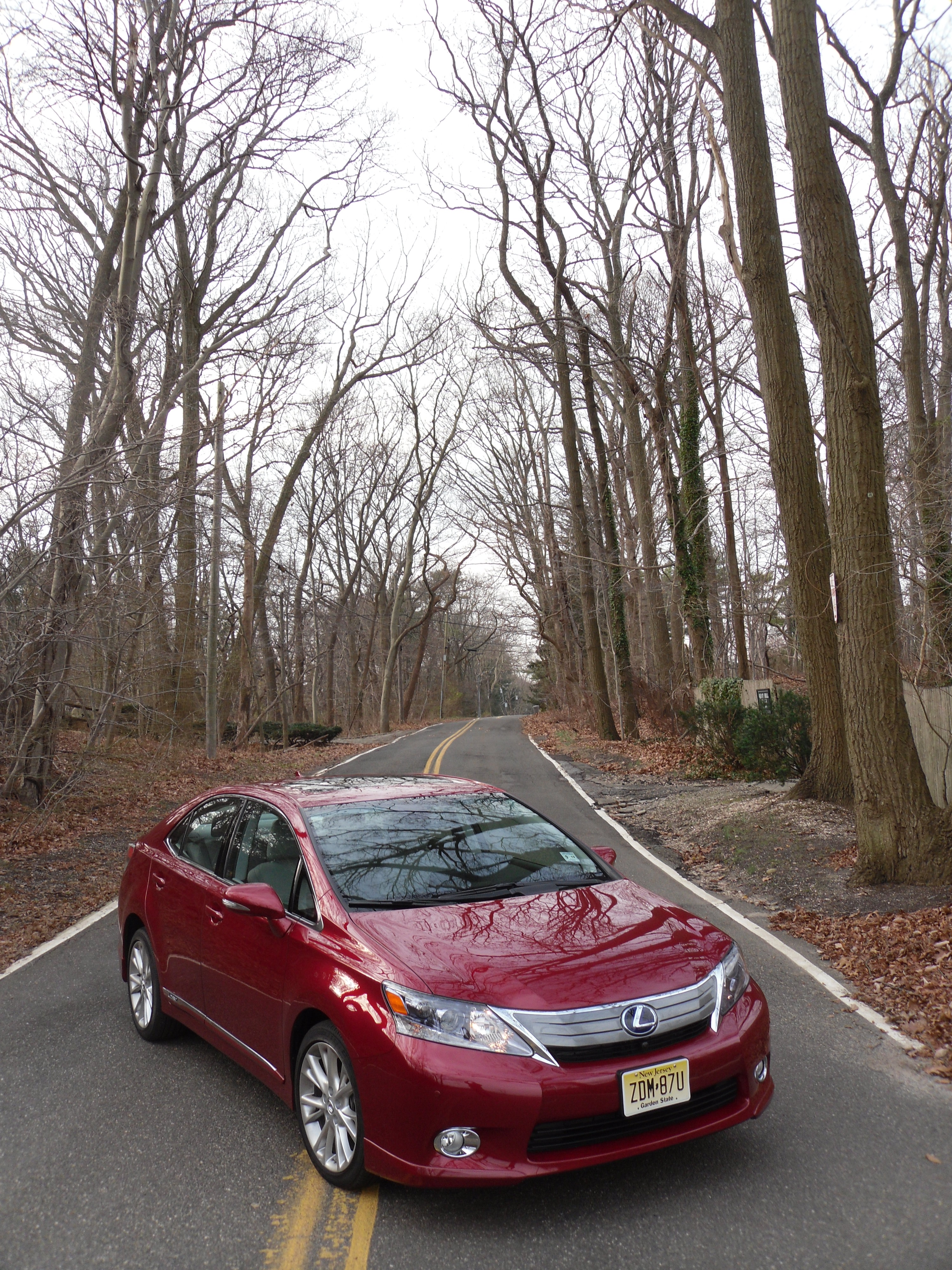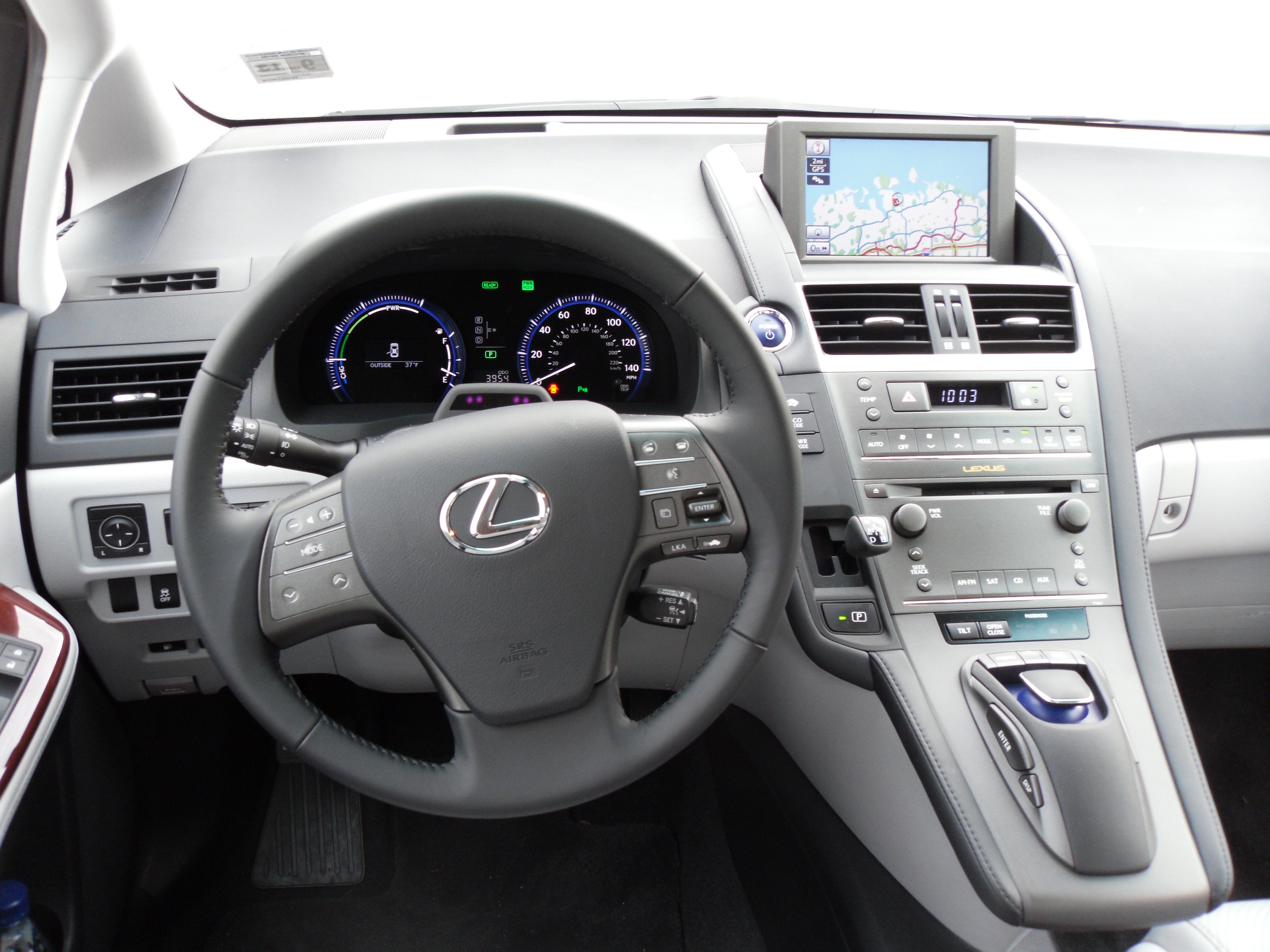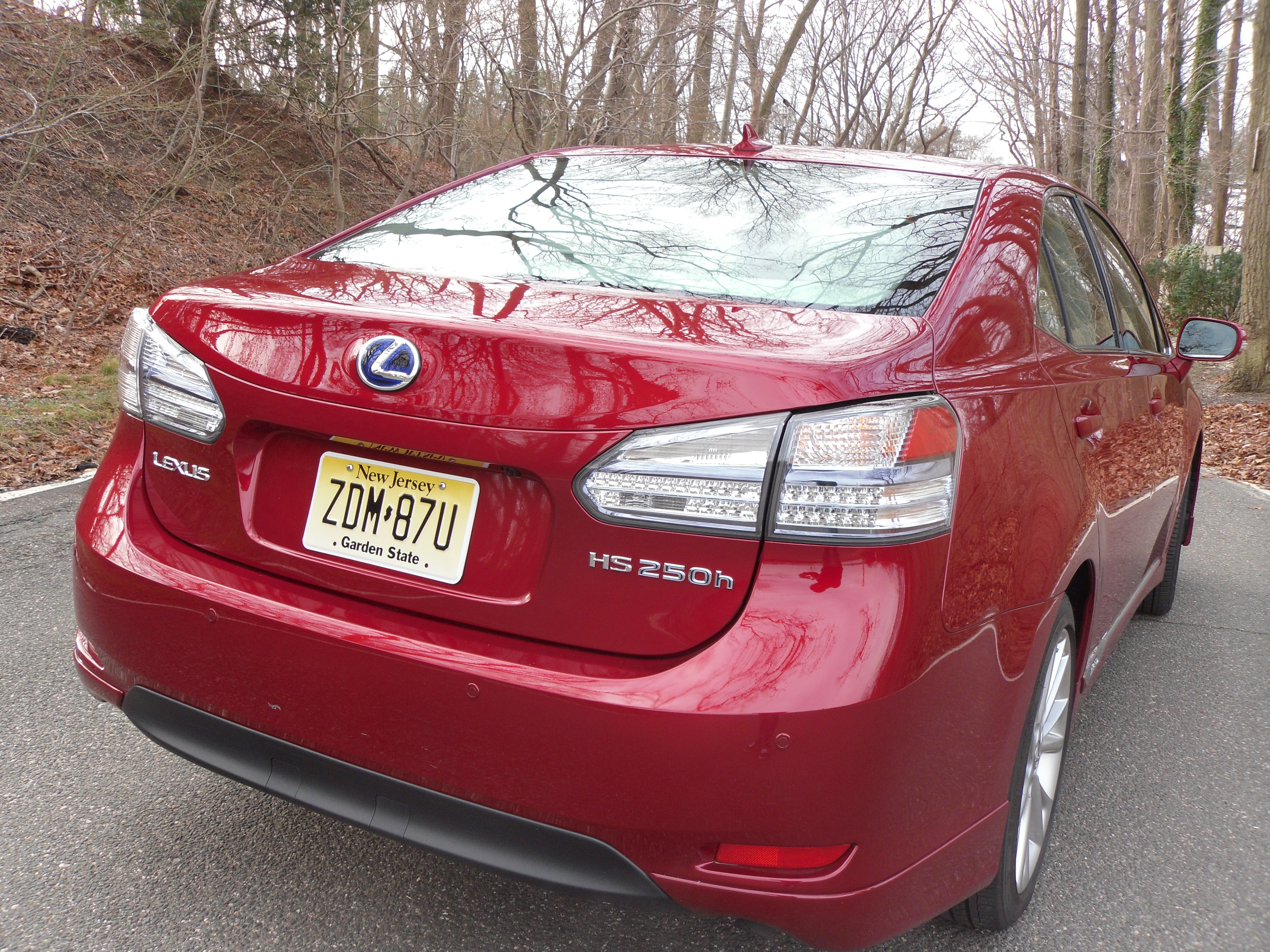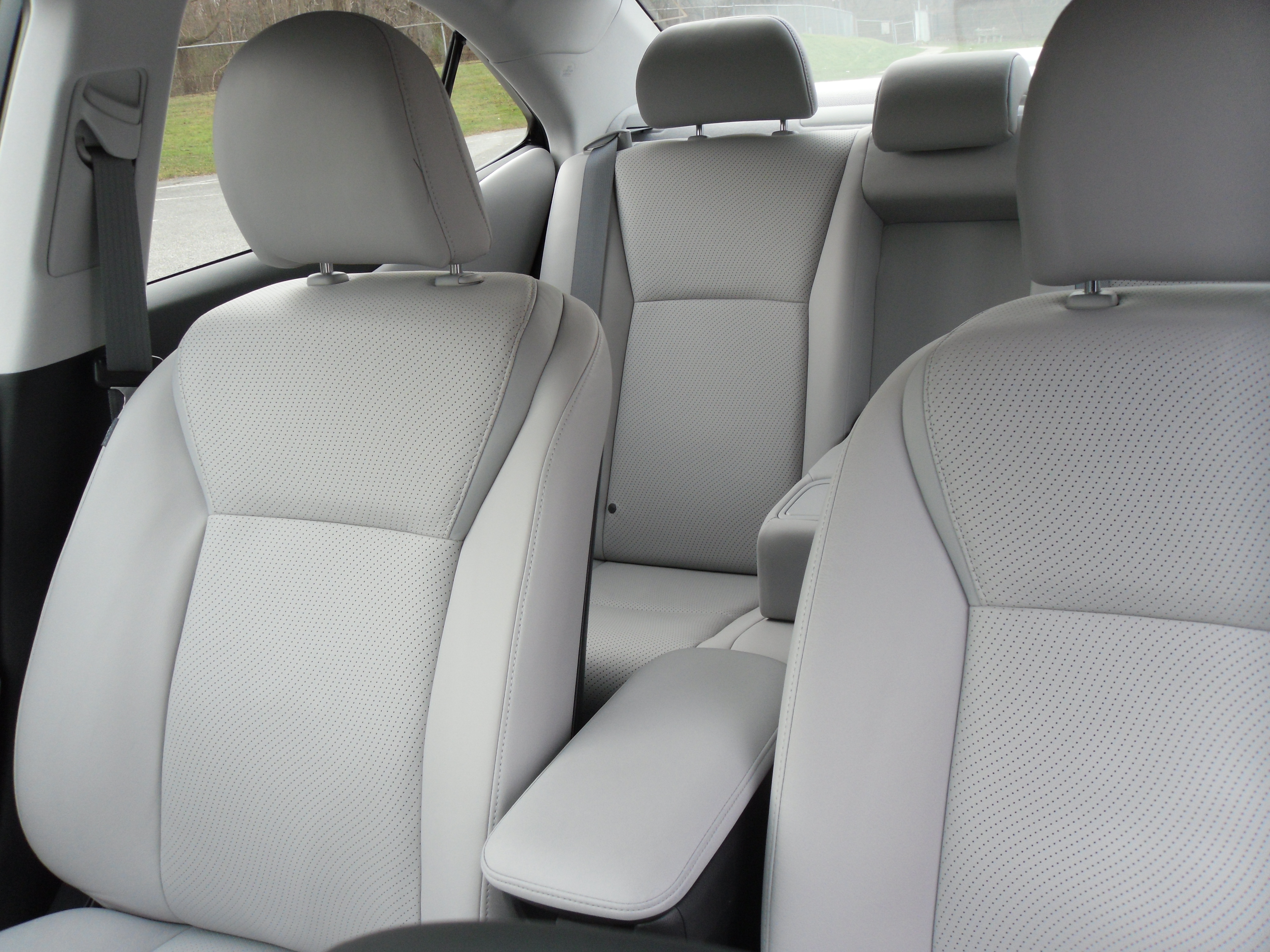We’ve come a long way in a short while, when climate change and carbon footprint entered the lexicon, and the helpless automobile was borne aloft as the anathema to all things pure and natural. Naturally, alternative fueled cars had their time to shine, and to the staunch petrolhead, this was something to turn ones nose up at, be it out of pride or, more likely, fear that this heralded the end of “proper” cars. So here we are, at the precipice of a new decade, and powerful, dinosaur-burning thumpers are still here (for now), supercars have begun to embrace electric power, and in the middle of the spectrum we find, puttering along, with no sign of relentment, is the hybrid.
The Lexus HS 250h is the division’s first foray into the realm of hybrid power plants, an inevitable direction with the highly successful Prius close in Lexus’ lineage. Those of us without a large amount of hybrid experience (much like your humble, luddite reviewer) will approach the HS with a sense of trepidation and, more optimistically, a fresh perspective on the automobile as we have come to know it. One would first expect the shape to be as bulbous as its Toyota cousin, but the profile of the HS is not as pronounced, just a slightly bloated departure from more familiar sedan shapes. Despite being round, it still incorporates enough moderately clean lines to give certain aspects an element of seriousness. The HS features proximity sensors for keyless entry to the car and push button start, which tends to confuse things in one’s first starting of an unusual car since with push button start, the general methodology is holding start button, electronics switch on, and listening for the engine kicking off. This is not the case here where it is “hold start button, electronics activate….now you can leave.” I’ve always been the type of driver that warms a car thoroughly before heading out, regardless of a car’s vintage, and this came to mind as I wondered how this would be possible if the HS decides to start the engine a few minutes into my journey. Lexus, as I discovered would be a recurring response, had thought of this in advance. The car has no visible temperature gauge, but starting the HS first thing after a cold night will prompt the engine to turn on as it will sense the need to do so on its own.
The engine in the HS 250h is basically the same 2.4 liter inline-4 power plant optimized to complement an electric motor that one will find in the Camry Hybrid, which produces a decent 147 horsepower on its own without its electric companion. Between the two power systems, the car produces 187 net horsepower, which is plenty of adequate performance for a car of this size to get around without too much thought for the punch that it lacks. Buttons by the wheel allow you to select from the standard ECO mode to either “power”, which favors output to fuel consumption, to EV, that will have the electric motor do much of the work. While one might not feel a substantial difference between the various modes, an available info screen in the gauge cluster will show the driver in real time which system is doing what between the battery, the engine, and the wheels. An arrow from the engine symbol will show that it is currently sending power to the wheels, while the battery will do the same every once in a while for extra help, and braking will display an arrow from the wheels to the battery indicating kinetic energy reclamation. There is no regular tachometer in the HS 250h, but a gauge that goes from “charge” to “power” instead. Ride quality is comfortable as the Lexus is carried by a fully independent front and rear suspension that clearly prefers comfort to nimbleness and does well in that regard, while also having decent braking performance. Front visibility is excellent, but the blind spots are chillingly bad, and not being able to adequately see in various directions makes parallel parking a chore. The HS 250h has optional park assist cameras and sensors, and while they help slightly, they could do with improvement. The sensors, the most particularly useful parts, tend to have a very short reach, and only beep when one gets precariously close to something. The cameras would be helpful, but without an on-screen graphic like guide lines, it’s difficult to tell just how close the curb is to the side of the car, so the HS 250h tends to be on it, or nowhere near it.
Beyond the start button, the interior of the HS 250h is replete with a near overwhelming array of displays, buttons and interfaces for various systems, prominently presented on the center console that sweeps vertically down from the dash to the armrest. At the base is the input device for the Lexus driver information center, which is as near as a full-fledged computer mouse as a car will ever get. The size of this in relation to the gear shift as well as the shifter’s ousting from its traditional spot is indicative of the dominance of gadgetry in the HS 250h over the actual driving experience. The driver information center allows access to all major car functions as one might suspect. What it does well is navigation, where clicking and zooming across the map feels natural with the mouse-like interface. Upon entering a major highway, a sidebar panel will appear with the distance of the next three upcoming exits and what services one could find at them. What it doesn’t excel at is more detailed interaction in the midst of driving. On the subject for navigation, the system will lock you out from inputting any search parameters while on the move, and this also applies to dialing a phone via Bluetooth connection if you haven’t uploaded it in the phone book, or have it in your call history which lead me to the potentially less safe solution to bypass this nanny-ness by dialing the number on my phone anyway instead of using the car’s dial pad, which is at least near the driver’s line of sight in the flip-up nav-screen. Plenty of the rest of the functions are accessible while driving, but almost ironically, the interfaces are too home computer-like to be easily used on the go. ipod music menus, for example, are very much set up like file folders with tabs at the top of the screen that can be clicked on with the cursor, all perfectly fine when standing still, but take a large heap of the attention the driver budgets from his or her primary duties behind the wheel.
Lexus seems to have noticed that there is plenty to take your mind off of driving in the HS 250h and has a tech package available with loads of driving assists to pick up the slack. Most fascinating is the Lane Keep Assist, which uses various sensors to keep the car in the lane if the driver’s lack of focus causes the car to slightly veer. When activated and approaching the edge of a lane too much, the HS 250h will pull towards the center ever so slightly to compensate. It won’t be a dramatic, self-driving moment, but the driver will feel a subtle amount of force feedback in the steering wheel. The system will also display a steering wheel graphic on the LCD screen in the gauge cluster to remind the driver that one or both hands are absent from it, as well as have two lanes illustrated that become bold when one seems to be wandering near them. On top of the steering column are sensors that monitor the driver’s eyes as well when the Lane Keep Assist is on. Wandering pupils or heavy lids will prompt the car to beep loudly for attention. Shutting one eye won’t trick the sensors, but a decent amount of squinting will. The cruise control radar can work in conjunction with this and follow a lead car steadily while maintaining about a three car length distance. If there is a dramatic interruption such as getting cut off or someone ahead slamming the brakes, the HS 250h will beep wildly again and rapidly brake to a low speed, but will not stop completely on its own.
While these are meant for driver safety, between the comfortable ride quality and interior, driver information center, and driver assists, it’s easy to see how an occupant is almost discouraged from doing much driving at all (great for coming home from the bar as well, with taco bell in one hand and a podcast playing…so I hear). The HS 250h is clearly for someone who wants Lexus level comfort but has no call for much driving performance; with plenty to keep them entertained while getting from A to B, and reducing their fuel budget at a minimum. With an estimated combined MPG of 35, the HS 250h will probably only need refueling every other week with daily use. Money that isn’t spent on fuel will go to towards the dealership, as the MSRP starts at $37,000. This review car, laden with all options totals at $44,967, including the $875 delivery fee. Seems to be a hefty bottom line, but keep in mind an owner will be making 1k back a year from not going to the pump.
Words & Photos By – Alex Kalogiannis

